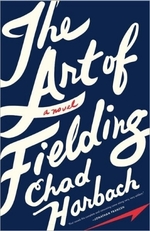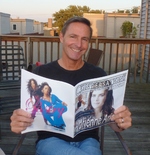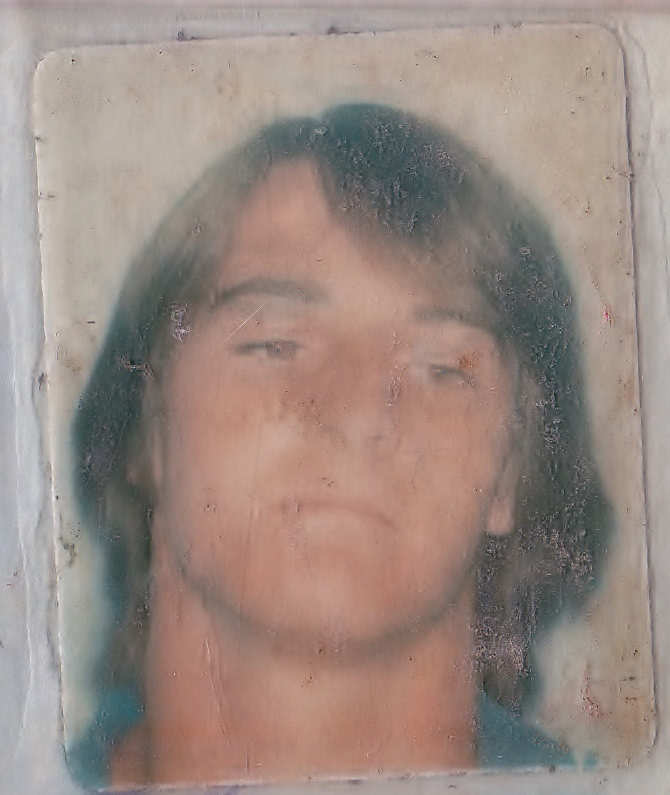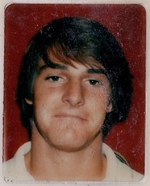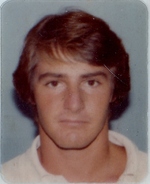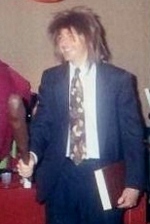The. Next. Big. Thing.
Sounds like a promo for a B horror flick, does it not? So it seems only fitting that Brian Pinkerton, a brilliant thriller-suspense-horror-mystery author, would be the one to invite me to participate in “The Next Big Thing” blog tour. Fitting because Pinkerton’s last work, Rough Cut, is a terrifying read into the darkest depths of the low-budget horror movie industry. If you haven’t read Pinkerton’s books, you’re missing out. I met Brian at the Love is Murder Mystery Conference and later picked up a copy of one of his earlier releases, Vengeance. I’ve been hooked ever since. His latest book is How I Started the Apocalypse, a zombie thriller that I’m going to pick up right now.
My mission, as I've chosen to accept it, is to answer ten questions (and only ten questions) and to then pass those ten questions on to five other authors. The fate of the world might just rest on my responses…
Ten Interview Questions for The Next Big Thing:
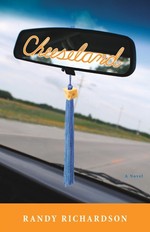 1. What is your working title of your book?
1. What is your working title of your book?
Cheeseland
2. Where did the idea come from for the book?
I love coming-of-age novels, and I was intrigued by the idea of creating a coming-of-age novel of my own, built upon my own experiences growing up as a teen in the south suburbs of Chicago.
3. What genre does your book fall under?
Realistic coming of age
4. Which actors would you choose to play your characters in a movie rendition?
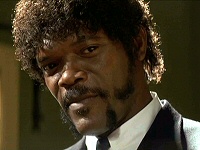 Samuel L. Jackson would have to play the role of Buck. Period. End of story.
Samuel L. Jackson would have to play the role of Buck. Period. End of story.
I’m not hip enough to know who could play the teen-age roles of Danny and Lance, but I’d pick John Cusack to play the adult role of Danny and Sean Penn (think Spicoli from “Fast Times at Ridgemont High”) to play the ‘grown-up’ Lance.
5. What is the one-sentence synopsis of your book?
Cheeseland: a wild road trip that takes three decades to end.
6.Will your book be self-published or represented by an agency?
Cheeseland was published earlier this year by Eckhartz Press, a small indie publisher out of Chicago.
7. How long did it take you to write the first draft of your manuscript?
About three years. I wrote the first draft entirely through a critique group, so each chapter was being reviewed as the manuscript was being developed.
8. What other books would you compare this story to within your genre?
Dennis Lehane’s Mystic River and Larry McMurtry’s The Last Picture Show.
9. Who or what inspired you to write this book?
Cheeseland, as you may have guessed, refers to Wisconsin, the nation’s leading cheese producer. When you cross the border from Illinois on Interstate 94, this is immediately brought home to you when you are met by the Mars Cheese Castle, a landmark tourist destination. Hence, the state’s nickname, Cheeseland. But for me Cheeseland is really a place that no longer exists. When I was a teen growing up in the suburbs of Chicago, back in the late ’70s, the drinking age in Wisconsin was 18. So I, and many other teens like me, would trek to Wisconsin to lead a life that blurred the line between adolescence and adulthood. Not surprisingly, this oftentimes led us to get in trouble.
The book is inspired one of those real life road trips across the border, when I joined two friends for a rock concert at Alpine Valley. After the concert, we returned to our campsite at Big Foot Beach in Lake Geneva. The night should have ended there but it didn’t because one of my two buddies wanted to get a bite to eat. I handed him the keys to my car, and that was the last thing I remember until I found myself lying on a curb outside of a late-night tavern in Kenosha, blood trickling out of my forehead. My friend had crashed the car into a parked car and I have these hazy memories of the owner of the other car yelling at him for hitting his car while I lay there bleeding and my friend trying to tell this guy that I needed help. I was very fortunate in that the only physical injuries I incurred were some minor cuts and abrasions to my forehead, which had struck the windshield when the car collided with the parked car. That entire scene gnawed at my for thirty years and developed into Cheeseland.
10. What else about your book might pique the reader’s interest?
If you came of age in the ’70s or early ’80s, no matter what part of the country you grew up in, you will probably relate the characters in Cheeseland. They are somewhat universal characters, I think. And if you are into the music of that era, then this is the book for you. Music constantly plays in the background of the first part of Cheeseland. The two main characters always seem to be battling for control of the 8-track player. That is how I remember my life as a teen. The music I listened to shaped me and defined me. When you're a teen-ager, music means more to you than at any other time in your life. Or at least that is true for me. The songs that I listened to then have stuck with me for the thirty-plus years that have followed. They take you back to a time and a place when life was so much simpler and so much more complex. You can check out the book’s Playlist, which I call Cheese Curds on this blog: http://cheeselandthebook.com/blog/2012/3/18/cheese-curds-the-cheeseland-song-playlist.html
Now is the time to pass The Next Big Thing torch to five other esteemed writers, all friends. Read them all.
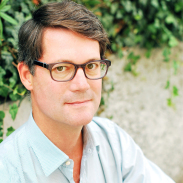 Frederick Lee Brooke is the author of the Annie Ogden Mysteries, which blend Carl Hiassen’s comic touch with a pinch (and sometimes punch) of Chicago flavor into them. Like many of the authors I know, I met Fred through my involvement with the Chicago Writers Association. Unlike most of the CWAers I know, Fred is a Chicago expatriate, living in Switzerland. He gave a flattering review of Cheeseland, and you know those Swiss know a thing or two about cheese. Visit Fred at http://www.frederickleebrooke.com/.
Frederick Lee Brooke is the author of the Annie Ogden Mysteries, which blend Carl Hiassen’s comic touch with a pinch (and sometimes punch) of Chicago flavor into them. Like many of the authors I know, I met Fred through my involvement with the Chicago Writers Association. Unlike most of the CWAers I know, Fred is a Chicago expatriate, living in Switzerland. He gave a flattering review of Cheeseland, and you know those Swiss know a thing or two about cheese. Visit Fred at http://www.frederickleebrooke.com/.
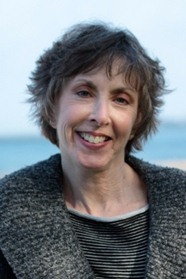 Samantha Hoffman is the author of What More Could You Wish For, a coming-of-age-50 journey, written with wit, charm and tenderness. I met Samantha at a writers’ conference and haven’t been able to ditch her since then. Not that I would really want to ditch her. You can start following her at http://samanthahoffman.blogspot.com/. You won’t want to ditch her, either.
Samantha Hoffman is the author of What More Could You Wish For, a coming-of-age-50 journey, written with wit, charm and tenderness. I met Samantha at a writers’ conference and haven’t been able to ditch her since then. Not that I would really want to ditch her. You can start following her at http://samanthahoffman.blogspot.com/. You won’t want to ditch her, either.
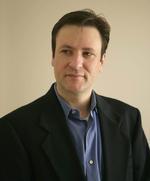 Rick Kaempfer is the co-author of The Living Wills and the upcoming Records Truly Is My Middle Name, a memoir by Chicago radio legend John Landecker. I met Rick through Cubbie Blues: 100 Years of Waiting Till Next Year, a book to which we both contributed. So we are both writers and Cubs fans, proof that we are both gluttons for punishment. Full disclosure: Rick is also my publisher, so you know he’s got good taste in literature. Learn more about Rick at http://rickkaempfer.blogspot.com/.
Rick Kaempfer is the co-author of The Living Wills and the upcoming Records Truly Is My Middle Name, a memoir by Chicago radio legend John Landecker. I met Rick through Cubbie Blues: 100 Years of Waiting Till Next Year, a book to which we both contributed. So we are both writers and Cubs fans, proof that we are both gluttons for punishment. Full disclosure: Rick is also my publisher, so you know he’s got good taste in literature. Learn more about Rick at http://rickkaempfer.blogspot.com/.
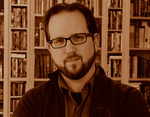 Kevin Koperski is the author of Amontillado, an Edgar Allen Poe-inspired murder mystery about love, trust and betrayal. An elegant writer, Kevin masterfully constructs a puzzle that takes the reader into the darkest places of the human condition. Full disclosure: Kevin is in my writing critique group, so we each know the others work intimately. And we’ve still managed to be friends. Read more about Kevin at http://blog.kevinkoperski.com/.
Kevin Koperski is the author of Amontillado, an Edgar Allen Poe-inspired murder mystery about love, trust and betrayal. An elegant writer, Kevin masterfully constructs a puzzle that takes the reader into the darkest places of the human condition. Full disclosure: Kevin is in my writing critique group, so we each know the others work intimately. And we’ve still managed to be friends. Read more about Kevin at http://blog.kevinkoperski.com/.
 David Stern is the author of The Balding Handbook, a comic self-help guide to coping with the loss of hair. Being a Fullhead, as Dave refers to me, I can’t fully relate to The Balding Handbook. But it is clearly a book a-head of its time. You’ll laugh and cry and rub your head all at the same time as you read it. Full disclosure: Dave is also my publisher. And a Sox fan. And, yes, we’ve still managed to become friends. Comb over with Dave at http://thebaldinghandbook.com/.
David Stern is the author of The Balding Handbook, a comic self-help guide to coping with the loss of hair. Being a Fullhead, as Dave refers to me, I can’t fully relate to The Balding Handbook. But it is clearly a book a-head of its time. You’ll laugh and cry and rub your head all at the same time as you read it. Full disclosure: Dave is also my publisher. And a Sox fan. And, yes, we’ve still managed to become friends. Comb over with Dave at http://thebaldinghandbook.com/.
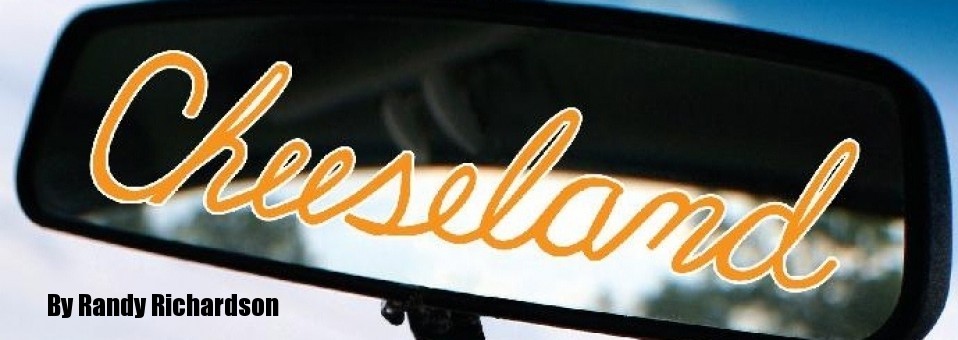


 Randy Richardson
Randy Richardson






